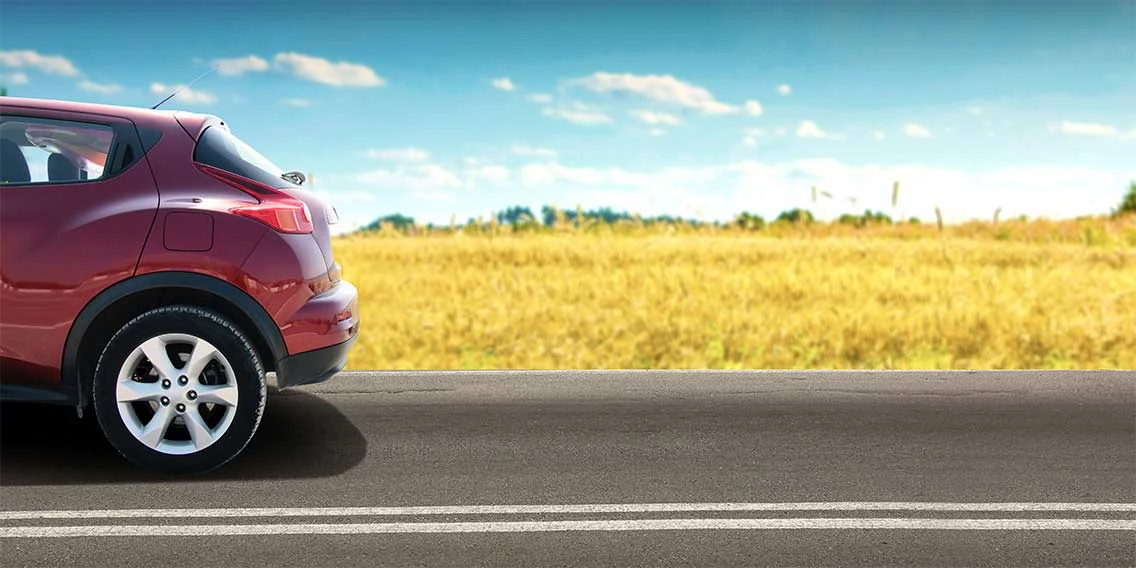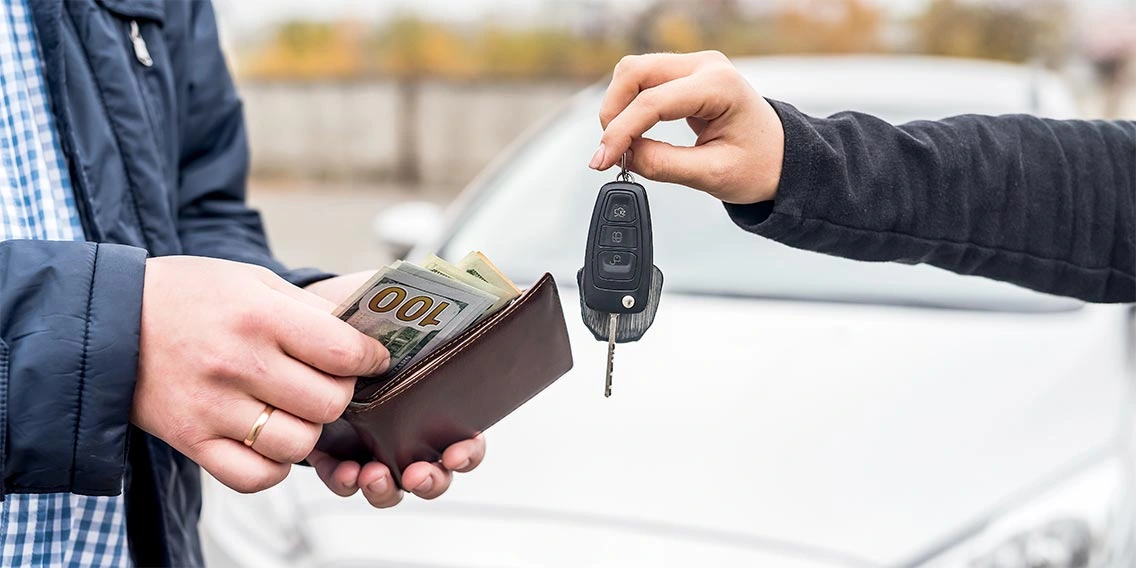AUTO
9 Things to Do After Buying a Used Car
EXPECTED READ TIME: 7 MINUTES
You took the plunge and finally have keys to a lightly used convertible like you’ve always wanted. Now, you’re ready to drop the top and hit the road.
Before journeying too far from home in your new-to-you pre-owned vehicle, you’ll want to take care of several post-purchase responsibilities as soon as possible.
Here’s a checklist of nine important things to do after buying a used car.

1. Transfer the Title
An official title transfer is one of the first moves to make after buying a used car. No matter how long you’ve been driving it, you don’t legally own your car or truck until you have the vehicle title in hand and your name and address are printed on it.
If you purchased your vehicle from a dealer, they should have filed the necessary title paperwork and submitted payment to your state’s department of motor vehicles (DMV) on your behalf. It will probably take a few weeks to process the transfer, then the DMV will mail a new title to your home address.
Buying a safe, reliable, and affordable pre-owned car or truck is a wise financial decision.
On the other hand, if you bought from a private owner, they should have signed the title over to you when you paid for the car. You’ll need to take the signed title to your local DMV office (some states allow you to do this online), fill out some paperwork, and pay a fee to have the title put in your name.
Keep in mind that if you finance your vehicle — whether through the dealer or by borrowing from a traditional credit union or bank — the new lienholder (the lender) technically owns the car, so their name will appear on the title. Once you pay off the loan, they’ll transfer the title to you, making you the official owner.
2. Insure Your Vehicle
You could argue that getting auto insurance is the first thing to do once you finalize the purchase of your previously owned automobile. After all, most states require you to have liability insurance before you can legally hit the road.
If you already have insurance on another car, your existing policy may cover your “new” vehicle up to a month following the purchase date. This temporary coverage, known as a grace period, allows you to lawfully drive your car until you can get it insured.
If you already have insurance on another car, your existing policy may cover your vehicle for up to a month.
It’s worth noting that liability insurance is the minimum coverage you can carry, and it only pays for damages or injuries that you cause to others. If you get into an accident that’s your fault — or your car is damaged some other way — and you don’t have comprehensive and collision insurance, you’re responsible for the entire cost of repairs.
3. Register Your Car
Sometimes confused with the car title, your vehicle registration proves you’ve paid the taxes and fees required to legally operate it on public highways and byways. That’s why law enforcement officers will ask for it, along with your driver’s license and proof of insurance, if you’re ever pulled over or go through a traffic stop.
Although requirements may vary by state, you generally need the following information to register your pre-owned vehicle with the DMV:
- Driver’s license
- Bill of sale
- Proof of ownership (i.e., the car title)
- Vehicle identification number (VIN, which should be printed on the bill of sale and title)
- Proof of insurance coverage
- Safety and emissions certificates
After submitting your paperwork and paying a registration fee and property taxes, you'll typically receive a license plate, a registration sticker to put on the plate or your windshield, and a registration card to keep in your glove compartment. These items usually expire every one to two years and must be renewed.
4. Get an Inspection
If, for some reason, your pre-owned car or truck wasn’t thoroughly inspected before you bought it, you should have it checked out by a qualified mechanic before logging too many hours on the road. A multi-point inspection will determine if these and other major components are in good condition and working properly:
- Engine and transmission
- Electrical and HVAC systems
- Tires and brakes
- Belts and hoses
- Exhaust and emissions systems
A professional inspection may cost you a few bucks, but the peace of mind it provides is priceless.
A professional inspection may cost you a few bucks, but the peace of mind it provides is priceless. And while any repairs would be, well, not priceless, fixing them now will give you more years on the road, which saves you the expense of purchasing a new car (or replacement parts for a bigger issue caused by neglect) down the line.
5. Read the Owner’s Manual
While far less exciting than taking your car out for an extended joy ride, sitting down for a few hours to read your owner’s manual is time well spent. This reference booklet contains a treasure trove of information to help you take better care of your pre-owned vehicle and, ultimately, get more enjoyment out of it.
Some of the essential contents you’ll find in your owner’s manual include:
- Maintenance schedules
- Troubleshooting tips
- Setup details
- Accessory instructions
- Warranty information
Most factory warranties expire after five years or 60,000 miles.
If your previously owned vehicle doesn’t have an owner’s manual, you may be able to obtain a copy online. Do a search using your car’s year, make, model — and, in some cases, the VIN — and you should find links with pdfs for part or all of the booklet.
You can also go directly to the vehicle manufacturer’s site (e.g., Ford.com if you bought a pre-owned Escape, Explorer, or other Ford car or truck) and search by model and year. Or, if you’re a tad more old-fashioned, call the parts department at the local dealer that sells your brand of vehicle and ask them to order a replacement manual.
Locate controls for the interior and exterior lights, wipers, climate control, turn signals, sound system, and other accessories.
6. Get to Know Your Car
Although you can learn a lot from the owner’s manual, the best way to familiarize yourself with your vehicle’s features and performance is by sliding behind the wheel. Take your car for a “dry run” while parked in your driveway so you can locate controls for the interior and exterior lights, wipers, climate control, turn signals, sound system, and other accessories.
Once you feel comfortable finding and operating the various switches, go for a long drive and practice using them under actual conditions. Every vehicle responds differently, so also pay special attention to how your car accelerates, brakes, and handles on the interstate, in traffic, and under various driving conditions (like heavy rain or curvy roads).
If your previously owned vehicle doesn't have an owner's manual, you may be able to obtain a copy online.
7. Establish a Maintenance Schedule
The performance, safety, and value of your pre-owned vehicle are all linked to how it was treated before you bought it and how well you maintain it going forward. From changing your engine oil to keeping the proper air pressure in your tires — and countless preventative measures in between — setting and sticking to a seasonal maintenance schedule will help your car run smoothly and reliably for years to come.
8. Consider an Extended Warranty
Most factory warranties expire after five years or 60,000 miles. This could saddle you with some pricey repair bills if any of your used car’s major systems or components go on the blink when they’re no longer covered. You can soften these types of financial blows by buying an extended warranty through your auto dealer for roughly $2,000 to $3,000, or from a third-party provider.
9. Look Into Refinancing
Depending on the interest rate and term you got on your original auto loan, you may want to start thinking about refinancing once the “new” starts to wear off your pre-owned vehicle.
It's usually best to refinance when you're at least six months into your current loan.
Generally speaking, it may make sense to refinance your car loan sooner rather than later if:
- You qualify for a better interest rate because your credit score has improved
- You find a lower interest rate and better terms than your current loan
- You can afford to shorten the length of your loan
- You can save enough to cover any costs of refinancing
- You need to reduce your monthly bill
If refinancing seems right for you, it’s usually best to do it when you’re at least six months into your current loan but still have two or more years left to pay it off. This will allow your credit score to readjust after the temporary dip it experienced when you took out the original loan. It will also ensure you’re in your new contract long enough to maximize overall interest savings.
The Takeaway
Buying a safe, reliable, and affordable pre-owned car or truck is a wise financial decision. Once you check all the boxes on your after-purchase to-do list, you can drive with greater confidence and enjoy the full sense of freedom your vehicle can bring.
Learn More About Car Loan Options Through PenFed
Discover the diverse offering of products, services, and support available to our members.




